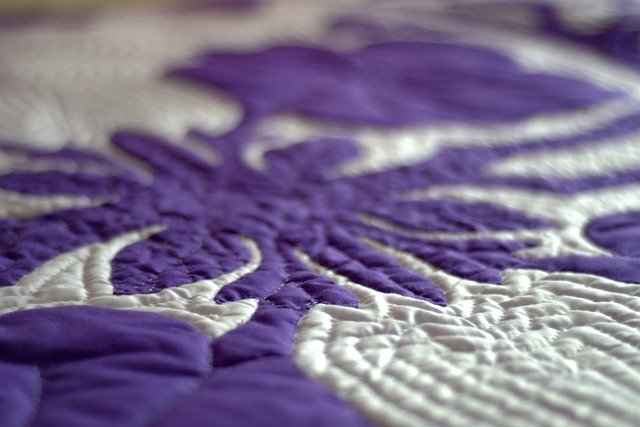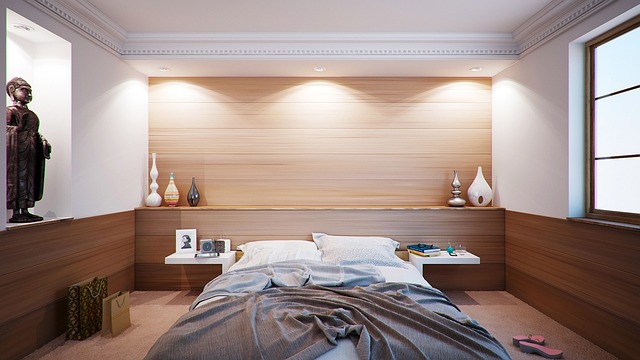Botanical Tapestries: The Art of Floral Embroidery in Home Decor
Imagine walking into a room where delicate flowers seem to bloom from the very walls, their petals and leaves stitched with exquisite care. This isn't a scene from a fairy tale, but the latest trend in home decor: botanical tapestries created through the art of floral embroidery. A fusion of traditional craftsmanship and contemporary design, these intricate pieces are transforming living spaces into lush, artisanal gardens.

In the past, embroidered florals were often confined to smaller items like cushions or tablecloths. Today, however, artists and designers are pushing the boundaries, creating large-scale pieces that serve as focal points in modern interiors. These botanical tapestries blend the warmth of handcrafted textiles with the bold impact of contemporary art, resulting in a unique aesthetic that appeals to a wide range of design sensibilities.
The Bloom of a New Trend
The resurgence of floral embroidery in home decor can be attributed to several factors. There’s a growing appreciation for artisanal crafts and a desire to incorporate more texture and depth into living spaces. Additionally, as people spend more time at home, there’s an increased focus on creating environments that feel both comforting and visually stimulating.
Botanical tapestries offer a way to bring nature indoors, creating a sense of calm and connection to the outside world. Unlike static paintings or prints, these embroidered pieces have a three-dimensional quality that catches light and shadow, adding dynamic visual interest to a room. They also provide a softer, more organic counterpoint to the clean lines and hard surfaces often found in modern interiors.
Techniques and Styles
The world of floral embroidery is vast and varied, with techniques ranging from traditional hand-stitching to innovative machine embroidery. Some artists combine multiple methods to create complex, layered designs that blur the line between textile and sculpture.
One popular approach is the stumpwork technique, which involves creating raised elements that stand out from the background fabric. This method allows for incredibly lifelike representations of flowers and foliage, with petals and leaves that seem to reach out from the tapestry.
Another emerging style is the use of negative space in embroidered designs. By leaving portions of the background fabric exposed, artists create airy, abstract compositions that feel both modern and organic. This technique is particularly effective when working with lighter fabrics like linen or silk, allowing the natural texture of the material to become part of the design.
Incorporating Botanical Tapestries into Home Design
The versatility of botanical tapestries makes them suitable for a wide range of interior styles. In minimalist spaces, a large embroidered piece can serve as a stunning focal point, adding warmth and texture without overwhelming the clean aesthetic. For more eclectic interiors, smaller embroidered panels can be grouped together to create a gallery wall effect, mixing floral designs with other textile art or framed pieces.
Color plays a crucial role in how these tapestries integrate into a space. While some designs feature bold, vibrant hues that make a strong statement, others use more muted tones for a subtle, sophisticated look. The choice of background fabric also impacts the overall effect, with options ranging from crisp white linen to rich, jewel-toned velvet.
When it comes to placement, botanical tapestries aren’t limited to walls. They can be used as headboards, room dividers, or even as decorative elements on furniture. Some designers are experimenting with embroidered ceiling panels, creating the effect of lying beneath a canopy of flowers.
DIY and Customization
One of the most appealing aspects of this trend is its accessibility. While high-end, artist-created pieces can be quite expensive, there are options for every budget. Many craft stores now offer embroidery kits specifically designed for creating botanical wall art, allowing even beginners to try their hand at this trend.
For those who prefer a more personalized touch, custom embroidery services are becoming increasingly popular. These services allow homeowners to commission pieces that reflect their personal style or incorporate meaningful flowers, such as those from a wedding bouquet or a favorite garden.
Sustainability and Longevity
In an era of increasing environmental awareness, botanical tapestries offer a sustainable alternative to mass-produced decor. These handcrafted pieces are often made with natural materials and are designed to last for generations, in stark contrast to disposable, trend-driven items.
Moreover, the timeless nature of floral motifs means that these pieces are likely to remain relevant and beautiful for years to come. As the trend evolves, we’re seeing a move towards more abstract and stylized representations of flora, ensuring that botanical tapestries can adapt to changing design preferences.
The Future of Floral Embroidery in Home Decor
As technology advances, we’re likely to see new innovations in the field of textile art. Digital embroidery machines are becoming more sophisticated, allowing for incredibly detailed and precise designs. Some artists are experimenting with unconventional materials, incorporating elements like LED lights or conductive thread to create interactive botanical displays.
Despite these technological advancements, the handmade quality of embroidery remains a key part of its appeal. The slight imperfections and unique character of hand-stitched pieces continue to resonate with those seeking authenticity in their home decor.
Botanical tapestries represent a beautiful synthesis of art, nature, and interior design. By bringing the intricate beauty of embroidered florals into our living spaces, we create environments that are not only visually stunning but also deeply connected to the timeless art of needlework. As this trend continues to evolve, it offers endless possibilities for transforming our homes into personal, artisanal gardens that bloom year-round.





